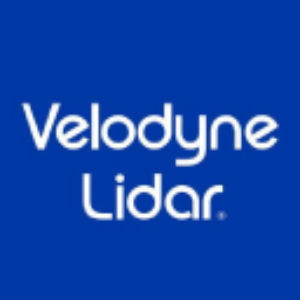Velodyne Lidar Calls for Action to Improve Pedestrian Safety
New Velodyne White Paper Published by SAE International Shows How Advanced Driver Assistance Systems (ADAS) Can be Improved to Reduce Nighttime Dangers to Pedestrians

Diagram of the Safety of the Intended Functionality (SOTIF) standard validation process, highlighting steps in the design, implementation and testing phases to ensure the safety function performance aligns with design intent. The SOTIF approach provides a methodology for identifying and maximizing the range of scenarios in which a vehicle can be expected to function safely under normal operation or with reasonably foreseeable misuse. (Graphic:
The white paper, called “Designing and assessing vehicle safety functions with a use case approach,” is available on the
Recently, the
Addressing PAEB Performance Limitations
PAEB systems are a foundational element for both AV and ADAS applications. They provide automatic braking for vehicles when pedestrians are in the path of the vehicle’s travel and the driver has taken insufficient action to avoid an imminent crash. However, current systems utilizing camera and radar technology frequently fail to protect pedestrians in dark conditions according to independent testing by the
To reflect real-life conditions, the white paper proposes expanding future PAEB testing protocols to include tests conducted in dark, nighttime conditions. The new tests would be conducted in less than one lux ambient illuminance, using low-beam headlights and without streetlights. This change would provide the public with useful information on the performance of pedestrian detection systems in low-light conditions that occur on roadways.
To demonstrate how expanded testing would work, the white paper details the results of nighttime PAEB tests conducted by Velodyne. The tests evaluated a highly-rated PAEB system using current camera and radar-based technology and Velodyne’s PAEB system that uses Velodyne’s lidar sensors and Vella™ software. In these nighttime conditions, the camera and radar-based PAEB system failed in all five scenarios while the lidar-based system avoided a crash in every situation tested.
“PAEB systems can potentially have safety hazards related to nighttime driving and speed without system failure,” said
In March of 2021, the
“With dark, nighttime conditions so dangerous for pedestrians, it is imperative vehicle assessment organizations expand PAEB testing in ambient light conditions of less than one lux,” said
About
Forward Looking Statements
This press release contains “forward looking statements” within the meaning of the “safe harbor” provisions of the United States Private Securities Litigation Reform Act of 1995 including, without limitation, all statements other than historical fact and include, without limitation, statements regarding Velodyne’s target markets, new products, development efforts, and competition. When used in this press release, the words “estimates,” “projected,” “expects,” “anticipates,” “forecasts,” “plans,” “intends,” “believes,” “seeks,” “may,” “will,” “can,” “should,” “future,” “propose” and variations of these words or similar expressions (or the negative versions of such words or expressions) are intended to identify forward-looking statements. These forward-looking statements are not guarantees of future performance, conditions or results and involve a number of known and unknown risks, uncertainties, assumptions and other important factors, many of which are outside Velodyne’s control, that could cause actual results or outcomes to differ materially from those discussed in the forward-looking statements. Important factors, among others, that may affect actual results or outcomes include uncertainties regarding government regulation and adoption of lidar, the uncertain impact of the COVID-19 pandemic on Velodyne’s and its customers’ businesses; Velodyne’s ability to manage growth; Velodyne’s ability to execute its business plan; uncertainties related to the ability of Velodyne’s customers to commercialize their products and the ultimate market acceptance of these products; the rate and degree of market acceptance of Velodyne’s products; the success of other competing lidar and sensor-related products and services that exist or may become available; uncertainties related to Velodyne’s current litigation and potential litigation involving Velodyne or the validity or enforceability of Velodyne’s intellectual property; and general economic and market conditions impacting demand for Velodyne’s products and services. For more information about risks and uncertainties associated with Velodyne’s business, please refer to the “Management’s Discussion and Analysis of Financial Condition and Results of Operations” and “Risk Factors” sections of Velodyne’s
View source version on businesswire.com: https://www.businesswire.com/news/home/20210915005189/en/
Velodyne Investor Relations
InvestorRelations@velodyne.com
Velodyne Media
Codeword
velodyne@codewordagency.com
Source:








